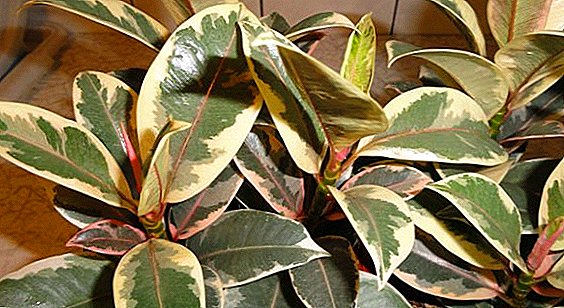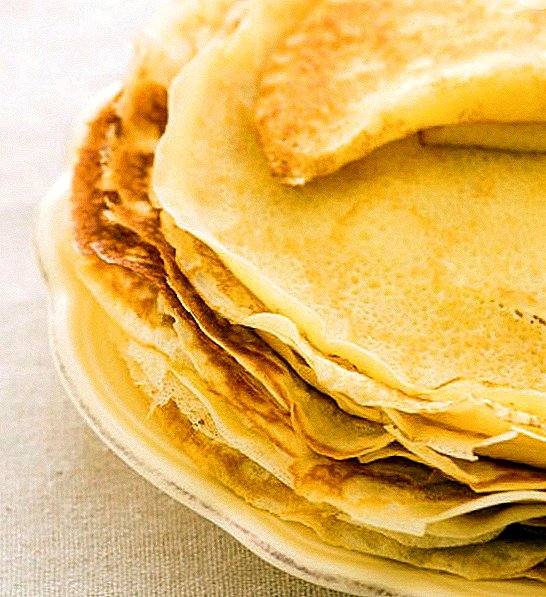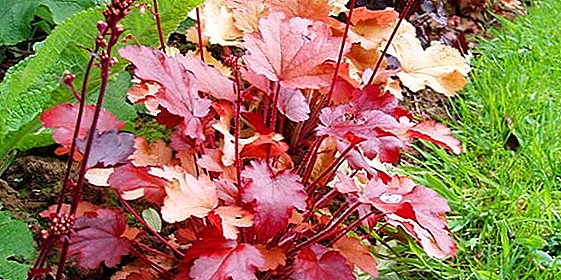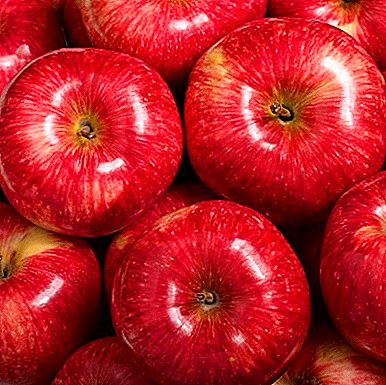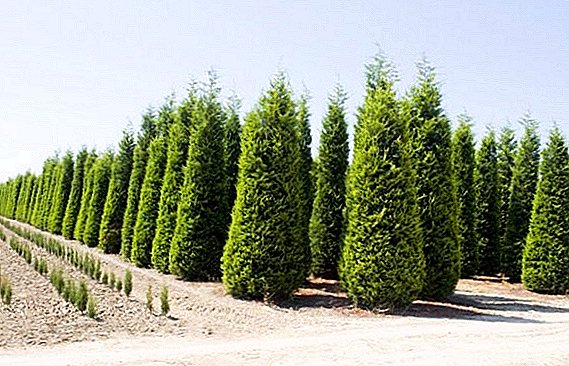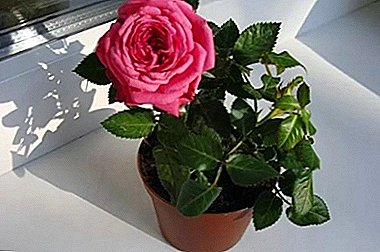
Dwarf rose - an elegant miniature plant that will be the perfect decoration for a home or alpine slide. Unlike ordinary roses, it is more convenient to care for a dwarf, it blooms for a whole season.
What are the features of this interesting look? How to care for him? What are the types of dwarf roses? Answers to these and other questions can be found in our article.
Description and features
Types of dwarf crops
Bengal
This species was introduced to Europe from Bengal, for which he received its name. Bengal rose bush grows in height by 40-50cm. The leaves are pointed, dark green. The shape of the flowers is slightly flattened, and their color can be red, white or pink.

Tea room
Tea rose was brought from China. Its aroma is reminiscent of the smell of tea, for which she got its name. There is another version - its blooming flowers resemble the shape of a Chinese tea bowl. The bush of this rose grows 50cm. The leaves are dark green. have an oval shape. The flowers are double, large, and their colors can be very different.
This species has a long flowering. This is the only kind of roses from which you can make tea.

Mix
The bush of this interesting type of dwarf roses looks like a finished bouquet. They are not distributed for sale by grade, so they are called that. It happens miniature (up to 30cm) and patio (up to 50cm). She has very different colors. Flowers of medium size, flattened.

Polyanthium
It is also called many-flowered. It can reach a height of 50 cm. The flowers are small, terry or semi-double, they do not smell. Flowers gather in inflorescences, differ in variety of color shades.

Botanical description
It belongs to the Rosaceae family. Most often, dwarf roses - evergreen multi-stem shrubs, which height varies from 10 to 50 cm. The leaves are alternate, complex, with stipules, each of which includes 5-13 leaves of oval or rounded shape. The surface of the leaves can be shiny or matte, their color is usually dark green.
The stems of most species of dwarf roses are covered with thorns. The diameter of the flowers can be from 1 to 5 cm. Flowers can be simple, terry and semi-double. Their shape is spherical, flat, goblet or cup. The shape of the petals can also be different: they are bent, flat or wavy. Dwarf roses can be of all colors and shades, there is no only blue and blue.
Features
The main feature of miniature roses is their small size. Another feature is that this species is suitable for growing both indoors and outdoors. The sizes of mini-roses make it convenient to grow them at home, and due to their cold resistance, they are also suitable for open ground.
Another distinctive feature of these roses - they will be a great decoration for borders, porches and mansards, and again thanks to its small size.
Pros and cons of growing miniature house species in pots
 The advantages of growing miniature roses at home include:
The advantages of growing miniature roses at home include:
- decorative;
- long flowering period;
- a variety of colors and shades;
- resistance to diseases and pests.
The disadvantages of growing mini-roses at home include:
- dwarf roses are more whimsical than ordinary;
- small size (not everyone likes it).
History of origin
The history of dwarf roses is not completely clear. You can find several versions of the origin of the species in different sources: some of them say that Europe is the birthplace of the flower, others believe that it was imported from Southeast Asia. But according to the classical version it is believed that the miniature rose was brought from China.
Content requirements
A place
When growing a mini-rose, it is imperative to ensure good air exchange for it, so the best place for its location will be a balcony. You can put a pot with a rose and on the windowsill, but you will often need to open the window. In summer you can take a flower with you to the country.
Temperature
During flowering, which occurs in summer, the plant needs fresh air, so try whenever possible to make a flower on the balcony or loggia.
Room temperature will be ideal for a potted rose. Cold air is also harmful for it, so make sure that on cold days it does not blow from windows, and if you use a fan or air conditioner, put it away from the plant.
Humidity
 During the development and flowering of roses, be sure to spray it. You can arrange her warm shower once a week.
During the development and flowering of roses, be sure to spray it. You can arrange her warm shower once a week.
Anyway, it is impossible to ignore moisturizing, as this may lead to drying of the leaves or, even worse, the appearance of pests (about them below).
Lighting
Dwarf rose - light-loving plant, therefore, the lighting it needs good. But the scorching summer sun can damage the flower, so try to protect it from direct sunlight, especially at noon. In the morning and evening hours, the sun is not dangerous for a rose.
Cultivation and proper care of flowers in pots
Landing
Landing is carried out according to the following rules:

- Prepare a container.
- If the container has already been used, clean it with a brush, do not use detergents.
- Need to do a good drainage. For this you can use expanded clay: if there is a hole in the pot, the expanded clay layer should not be more than 1 cm, but if there are no holes, then at least 3 cm.
- Earth needs to be used nutrient and breathable. You can buy the soil in the store or cook yourself, mixing turf, humus and sand in the ratio of 4: 4: 1.
Watering
In the summer, the rose needs abundant and regular watering. Do not let the ground dry out. But if the summer is cold, then do not overpower the plant, for it the abundance of moisture is worse than its lack. After the end of flowering, watering should stop. During the wintering period it is necessary to water a dwarf rose, but very rarely, 1-2 times per period is enough.
Watering is renewed with the appearance of buds in the flower and increases with the growth and appearance of new leaves.
Water for irrigation should be warm, not lower than room temperature.
Top dressing
It is necessary to fertilize a rose only in the period of tying buds and flowering. Once every 10 days feed your flower with a special fertilizer for flowering plants. By the end of flowering (by the beginning of autumn), feeding must be stopped.
Pruning
Pruning should be done after the plant has faded, but spring pruning can also be done. Leave 4-5 buds on each branch, and remove the rest (except for leaves). Pruning plants - the key to abundant flowering, it must be carried out necessarily.
Transfer
 A potted rose does not like transplanting, so it is carried out only if the pot is small.
A potted rose does not like transplanting, so it is carried out only if the pot is small.
A transplant is performed as follows:
- Choose a larger container, clean and wash it.
- The plant has very tender roots, which are very easy to damage, so it is better to soak the pot with a flower for half an hour. So an earthy ball will be better separated from the pot.
- We transfer the earthy clod into a new container, sprinkle it with earth and thoroughly tamp it around the plant.
Pest and disease prevention
In order to prevent infection of a flower, you need:
- Ensure that the soil is not overwetted.
- Maintain sufficient humidity.
- Protect the plant from drafts.
- Keep the flower away from direct sunlight.
Also, after buying the plant, it is possible to treat the rose with Fitoverm, which will provide protection against pests.
Reproduction of indoor cultures
Propagate the dwarf rose by cutting. Do this as follows:
- With the help of a knife, which must be treated with a solution of potassium permanganate, cut the stalk 10 cm long.
- The cut should be done directly under the kidney, it is desirable that it be oblique.
- Make the upper cut 5mm above the kidney.
- Remove leaves from the bottom of the cutting.
- Place the cutting in water for 10 hours.
- Plant cuttings in the prepared mixture of sand and peat.
- Strong watering is not needed, otherwise the cuttings may rot.
- Ensure a stable temperature of at least 18 degrees and protect cuttings from direct sunlight.
Diseases and pests
 Home rose can be affected by such diseases and pests as:
Home rose can be affected by such diseases and pests as:
- Chlorosis. The appearance of this scourge can be recognized by yellowing leaves. With chlorosis effectively fights iron chelate.
- Mealy dew. White spots on the leaves and stems of the plant indicate its appearance. Used for the treatment of fungicides.
- Spider mite This pest leaves a thin web between the leaves. To combat it, use drugs Fitoverm and Apollo.
- Thrips and aphids. Deformation of leaves and flowers indicates that a plant is infected with these pests. For the treatment using insecticides for indoor plants.
Errors, consequences and their correction
Problems with growing mini roses at home may also arise from improper care. What problems could it be?
- The plant does not develop and does not grow. The cause may be an abnormal diet. To eliminate the problem you need to regularly feed the flower.
- Falling leaves. The reason is the increased acidity of the soil. Solve the problem can be limy soil.
- Leaves turn yellow and fade. Have you noticed your problem with your plant? So he does not have enough light! Choose a well-lit place, and in the winter use additional lighting in the form of lamps.
- Rose does not bloom. The fact is that you have not transplanted your rose for a long time! Although she does not like this, this procedure should be carried out once every 2 years.
A miniature rose is a great way to decorate your home. The variety of colors and types allows you to make a choice for the soul among its many varieties. Of course, it is quite difficult to care for her, but the result of your work will not be slow in waiting - your flower will delight you for a long time with its bloom.


